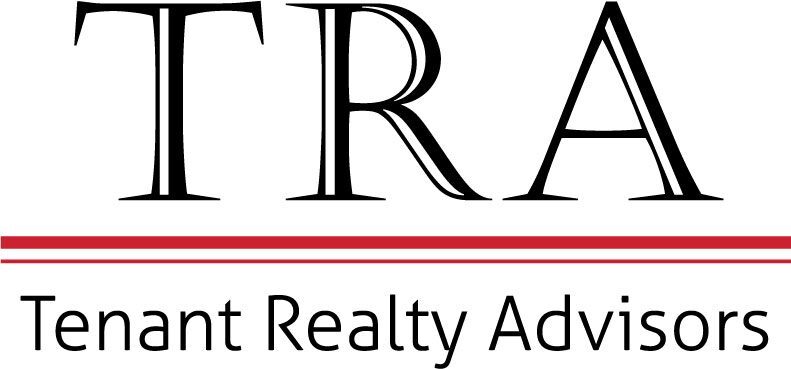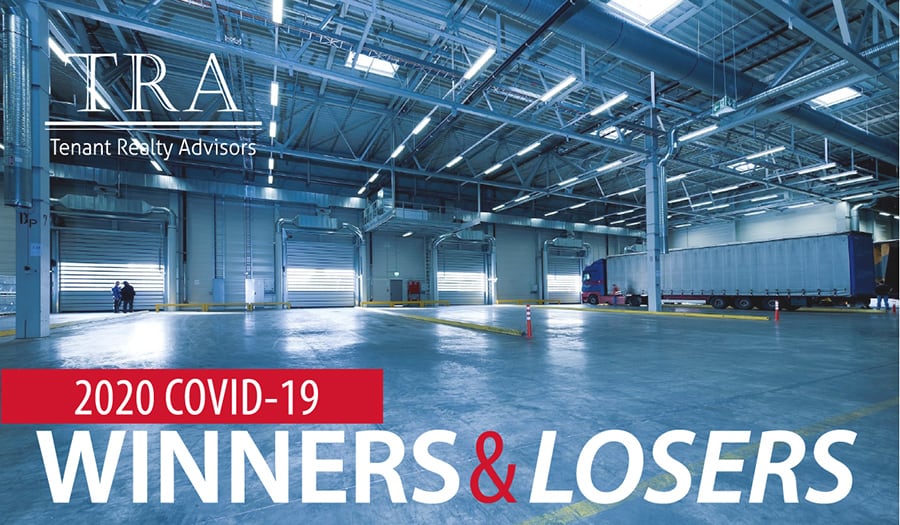We are frequently asked by our clients and friends: what has been the effect of COVID-19 on our local real estate market?
We try to observe, be objective, do research, read a lot, ask questions, and listen to the answers that people tell us. We are in the business of knowing what business and the economy is doing.
People smarter than me have opined that COVID-19 accelerated trends that were already happening. And other people (this time including me ) have said that COVID-19 exposed systemic weaknesses in our economy, our business practices, and especially some of our politics and governance.
To answer the question, what has been the influence of COVID-19, we decided to offer our own TRA list of “winners and losers.” Here goes.
PLACES
LOSERS:
Big coastal cities that were already very expensive, congested, and beset with social and political problems such as homelessness, crime, etc. have been losers. The worst examples had government debt piling up, with new increasing taxes attempting to address the government overspending, plus a general anti-business attitude combined with years of bad governance. Great recipe, right?
WINNERS:
The rest of America… anywhere in “fly over country”. These areas are suddenly a more attractive place to live! Maintaining social distancing was tough in a 500 SF apartment in Manhattan. Among other things, working remotely enabled people to not have to fight LA or Seattle traffic to go to work every day, or jam themselves into a crowded train or bus.
These mid-America cities and states are seeing an influx of new residents and companies taking advantage of a lower cost of living, lower cost of doing business, lower taxes, and fewer hassles overall. These new arrivals are seeing fewer social problems with a less adversarial business environment. This will have long term effects that we are yet to see. The nation’s population distribution is changing; demographics are changing.
An example of a company downsizing their downtown big city office space footprint is Pinterest in San Francisco. One year ago, the company signed a lease for 490,000 sf in a to-be-built new building. In August they announced that they were not taking occupancy but were going to allow their employees to live and work in other cities. Pinterest must have felt strong about it because they wrote a check for $89,500,000 to the landlord to let them out of the lease.
INDUSTRIAL SPACE
WINNERS:
Owners and developers of industrial real estate have been huge winners. Turns out that “just in time inventory delivery” only worked if the supply chain was functioning 100%. The early days of the pandemic exposed weakness in our globalized supply chain when suddenly American consumer items were not available because factories in China were in lock down. The terms we are hearing these days are “home shoring” or “re-shoring” to describe bringing manufacturing back to the US. This increased demand for warehouse space has brought vacancies down to nothing and new construction has taken off.
Demand for industrial space has exploded all over the US. Our company is finalizing a lease for 48,000 sf of warehouse in South Carolina. We learned that that market is on fire. We hear the same story from our partner commercial brokers across the nation. Locally the Boise industrial market went into the pandemic lockdown with a 3.5% market vacancy rate. And that low vacancy spurred developers to build and build. We estimated that 500,000 sf of new industrial buildings have been completed in the last 9 to 12 months. But unbelievably the vacancy rate remains around 3.5%. For our reader’s reference a “balanced market” is said to be a 5-6 % vacancy rate.
LOSERS:
Industrial tenants/occupiers. The inventory is limited in all size ranges…from 2,000 SF flex space to the large 100,000 SF fulfillment/distribution centers. And besides the demand pushing rents up, the rents have also increased commensurate with the higher cost of the land and construction costs. A double whammy for occupiers. Many of our clients are facing huge rent increases at renewal time, with nowhere to look for cheaper options.
RETAIL SPACE AND E-COMMERCE
LOSERS:
 Traditional retail stores and restaurants were hammered and complete relief for them remains uncertain. Will the American consumer want “the shopping experience” and come back to the stores? Or is shopping in your pajamas at home preferred going forward? The restaurant industry which often operated on thin margins already was devastated.
Traditional retail stores and restaurants were hammered and complete relief for them remains uncertain. Will the American consumer want “the shopping experience” and come back to the stores? Or is shopping in your pajamas at home preferred going forward? The restaurant industry which often operated on thin margins already was devastated.
Some industry veterans estimate that most of the restaurants that have closed will never re-open. Especially hard hit were the operators who had only one or two locations. In other words, that family-owned neighborhood place you like so much. As restaurant goers we may be faced with fewer eating options as the big national chains take over the vacated restaurant spaces.
WINNERS:
E-commerce of course. But also, those retailers and restaurants that pivoted to e-commerce, virtual experiences and mobile/takeout/delivery options before the pandemic or quickly thereafter. For the most part across the US retail development and leasing is on hold, at least in the traditional sense.
OFFICE SPACE
WINNERS:
Well, we can’t think of any winners in this category. Zoom maybe? Anyone who owns office space and is trying to fill vacant space or renew his/her tenants on long term leases was hard hit, especially in the early days of the pandemic. Office leasing activity is picking up in Boise albeit less energetic than pre-COVID-19.

It has been a mixed bag for employees and employers. At first there was a productivity spike reported by happy employers. Now managers are saying the spike may have been because people were scared of being laid off. In some cases managers saw productivity decline especially in organizations where innovation and collaboration is necessary.
Other HR newsletters are commenting on higher levels of depression among workers dealing with the loss of association with other human beings and employee requests for mental health counseling. To say nothing of trying to work from home with kids, dogs and bored spouses nearby!
LOSERS:
With the challenge of finding winners, who are the losers? The biggest would be of course the building developers, owners and leasing brokers whose income is tied to leasing office space. Also, parking lot vendors, downtown vendors, and office furniture salespeople.
RESIDENTIAL
WINNERS:
Anyone who owns a single-family home or rental units. The exodus of people fleeing cities and states that are expensive, crowded, or beset with social political problems has made Boise seem like nirvana by comparison. And of course, the farmers selling off their land and the housing developers carving it up are winning right now.
LOSERS:
Anyone looking for a home in Boise. Inventory is down and accelerated demand has pushed up prices. It may have been Zillow who reported that Idaho and Boise’s residential prices are the fastest increasing in the entire country. This is potentially a big downside to the influx of people moving here. But don’t feel bad. This scenario has been seen before in different cities.
Antidotally (which may be another term for hearsay) we have heard stories of companies who decided to move to the Boise area but had to abandon their plans after their employees couldn’t find homes.
INVESTMENT REAL ESTATE
WINNERS:
Owners and sellers of multi-family, storage, industrial and quality retail investment real estate in the Boise area. The amount of money seeking good commercial real estate in Idaho is said to be the highest ever. Interest by out of state buyers is off the charts. Prices are off the charts as well. What used to be a 7.5 CAP, is now selling at a 5 CAP. For a typical 5,000 SF retail building, that equates to a value of $2 million vs $1.3 million 3 years ago….a 50% increase in value.
To say that Boise and the Treasure Valley have been discovered is an understatement at the highest level. Most local real estate brokers are inundated with out of state brokers and buyers seeking opportunities to own in Boise. It as if they all went to the same cocktail party or seminar and heard how great the place is.
We get a commercial real estate news feed called Globe Street. In a recent article they said that 200 Billion dollars of capital which had been sitting on the sidelines is jumping back in. With such a flood of cash pursuing properties, we will see the law of supply and demand in a high form.
LOSERS:
Anyone trying to find low risk, well located commercial real estate investment properties. Such buyers should expect heavy competition for what they seek. Buyers utilizing “ Tax Deferred 1031” exchanges may have particular issues find a property to exchange into in the time constraints required. I know this is frowned upon to say, but it may be a wiser move to cash out, pay your taxes, and wait for the next cycle.
We hope our readers find this informative.

